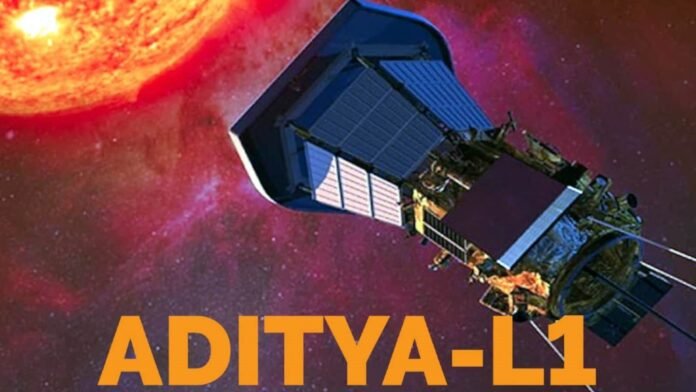
India’s first dedicated solar mission, Aditya-L1, has just made history! On February 22, 2025, the Solar Ultraviolet Imaging Telescope (SUIT) onboard Aditya-L1 captured something never seen before—the first-ever image of a solar flare ‘kernel’ in the lower layers of the Sun’s atmosphere. This discovery is more than just a cool space snapshot; it’s a game-changer in our understanding of solar activity and how it affects life on Earth.
Why This Discovery Matters
Imagine watching a thunderstorm on Earth, but instead of rain and lightning, it’s a massive explosion of energy from the Sun. That’s what a solar flare is. The ‘kernel’—a bright core at the heart of the flare—holds vital clues about how these powerful eruptions begin. What makes this even more exciting is that the observation was made in the near-ultraviolet (NUV) wavelength, a part of the spectrum that isn’t commonly used for studying flares. This fresh perspective could unlock new insights into how energy and matter move through the Sun’s atmosphere.
A Quick Look at the Aditya-L1 Mission
Launched on September 2, 2023, Aditya-L1 is India’s first solar observatory in space. Positioned 1.5 million kilometers from Earth at the Lagrange Point 1 (L1)—a special spot where the gravitational forces of the Earth and Sun balance—it gets a constant, uninterrupted view of the Sun. The spacecraft reached this vantage point on January 6, 2024, and has been sending back incredible data ever since. It’s ISRO’s second astronomy observatory-class mission, following AstroSat, and it’s already proving to be a monumental success.
How Aditya-L1 is Watching the Sun
Aditya-L1 carries several powerful scientific instruments, but the real star of the show is SUIT, which captures images in the Near Ultraviolet (NUV) wavelength. This special ability lets scientists observe solar flares, sunspots, and other solar activities in ways never seen before. With this level of detail, we’re getting closer to answering some of the biggest questions about our star.
A Major Solar Flare Spotted
On February 22, 2025, Aditya-L1 witnessed a fiery event—an X6.3-class solar flare. If solar flares were ranked like earthquakes, this would be a pretty big one! The data collected from this explosion gave scientists an in-depth look at how temperatures change in the Sun’s corona (its outermost layer). Not only did this confirm existing theories, but it also opened doors to new discoveries about the Sun’s energy cycles.
Why Should We Care About Solar Flares?
You might be thinking, “Cool, but how does this affect me?” Well, solar flares and coronal mass ejections (CMEs) can have a major impact on Earth. They can mess with GPS signals, disrupt satellite communications, and even cause power grid failures. Understanding them better means we can develop better ways to protect our technology and infrastructure from these cosmic tempests.
What This Means for the Future
Beyond keeping our satellites safe, this mission is contributing to something even bigger—our knowledge of solar physics. Aditya-L1 is helping scientists study the Sun’s magnetic fields and plasma behavior, which are crucial not just for space weather forecasting but also for research into sustainable fusion energy. After all, the Sun itself is the ultimate nuclear fusion reactor, and learning from it could help us develop cleaner energy solutions here on Earth.
A Proud Moment for India and Space Science
This achievement isn’t just a win for ISRO—it’s a win for all of humanity. By capturing this groundbreaking image, Aditya-L1 has taken us one step closer to unraveling the mysteries of our closest star. And the best part? This is just the beginning. With more discoveries on the horizon, India’s solar mission is proving that space science isn’t just about exploring the unknown—it’s about making life on Earth better, one revelation at a time.

